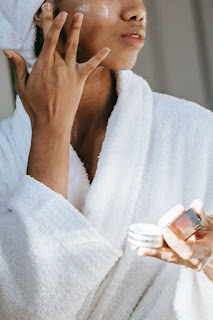Clean Beauty 101: What You Need To Know
Clean beauty is associated with natural beauty, green beauty, and all other types of beauty that deviate from the norm.
But at its core, what does the clean beauty movement stand for?
Since there’s no legal or official definition, many brands have taken it upon themselves to define clean beauty according to their agendas.
But some do are good clean beauty brand which are defining the clean beauty market.
It’s time to settle this debate once and for all. So, what is clean beauty?
What is clean beauty?
According to Matin Roy of mStudio NYC, there are four criteria for a clean beauty product:
Clean is not harmful
Period (naturally occurring, not synthetic)
Aesthetic natural (nothing artificial)
Proven effective (science-based)
This definition encompasses ingredients that cleanse, tone, and brighten skin without further exposure to any harmful ingredients.
If you are looking for clean aloe vera soap, then checkout Urvija.
Clean beauty means just that, everything from the ingredients to the process of the brand’s product preparation, packaging, and distribution must be created in a way that is safe, effective, and environmentally friendly.
This means that chemical and synthetic ingredients are strictly banned from the clean beauty sector and products are only allowed to use natural, pure and “clean” ingredients.
Why use clean beauty products?
Clean beauty is simply about using natural ingredients, or ones that aren’t tested on animals, on your beauty routine. That’s it.
Here’s how the movement grew and why you should join the movement today.
It’s Anti-Drug
In the 70’s, clean beauty was used in a more health-conscious way. Rather than using harsh chemicals on your skin, they used natural ingredients, usually plants or minerals.
They created a powerful blend of anti-free radical ingredients to eliminate any free radicals in the body that could cause illness.
Eventually, it took off in the late ’90s, as many brands began to offer their products with “cleaning” in the name.
The quest to use clean beauty on an everyday basis began to influence mainstream skin care products.
Types of clean beauty products
1. Superfood: Used by individuals seeking nourishing and healthy ingredients and products. Superfoods have vitamins, minerals, and other plant-based ingredients that have been used for medicinal purposes for thousands of years. These include vitamin C, vitamin E, aloe vera, chamomile, papaya, green tea, turmeric, blue-green algae, nettle, turmeric, avocado, and more. Many of these are packaged as supplements and are generally consumed as food.
2. Skin Renewing: Used to provide long-lasting results for skin care and brightening purposes.
3. Anti-Pollution: Anything that purports to be non-toxic and intended to protect the skin from harmful toxins and environmental damage. Many items in this category are cruelty-free.
4.
Product claims to be aware of
One of the defining characteristics of clean beauty is that it aims to be “clean” or “natural” as a value and as a descriptor of a product. It implies that the product is not using synthetic substances, such as parabens, phthalates, sulfates, and artificial colorants. These synthetic substances have been found to be found in consumer products in the United States, but researchers still do not know how they may impact human health.
They are also associated with hormone disruption, early puberty, and breast cancer.
Products to avoid
Parabens are a family of chemical compounds, used in many beauty products, that are classified as “endocrine disruptors,” or chemicals that can affect the endocrine system in humans.
The environment and animal testing
Clean beauty, as the name implies, is an extension of the natural beauty movement. Consumers desire products that are safer and eco-friendly.
Coconut oil is a form of mineral oil, so it is a safe product to use on the body.
Vaseline and petroleum jelly are also mild mineral oil products.
Natural or organic
Clean beauty is the new standard of beauty. Products in this category must be 100% natural or organic.
Natural means that the product has a higher percentage of essential oils, fruits, herbs, and vegetables, versus synthetic ingredients.
But a natural product can still have synthetic ingredients. It’s just that the percentage of synthetic ingredients is significantly less than natural ingredients.




Comments
Post a Comment